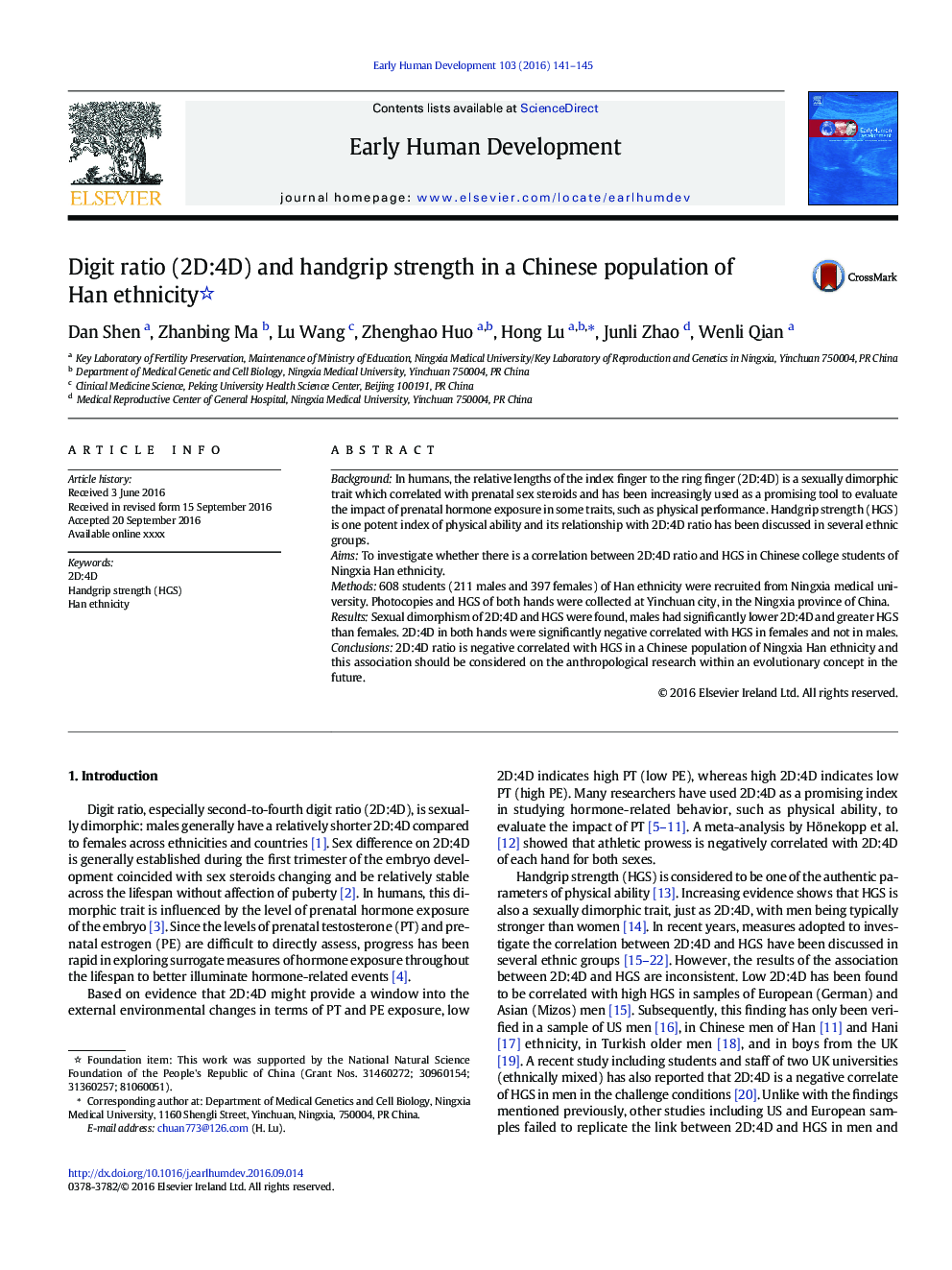| Article ID | Journal | Published Year | Pages | File Type |
|---|---|---|---|---|
| 3916385 | Early Human Development | 2016 | 5 Pages |
•Sexual dimorphism of 2D:4D and HGS were found, males had significantly lower 2D:4D and greater HGS than females.•2D:4D in both hands were significantly negative correlated with HGS in females but not in males.•2D:4D in both hands were significantly negative correlated with HGS in females but not in males in a Chinese population of Ningxia Han ethnicity.
BackgroundIn humans, the relative lengths of the index finger to the ring finger (2D:4D) is a sexually dimorphic trait which correlated with prenatal sex steroids and has been increasingly used as a promising tool to evaluate the impact of prenatal hormone exposure in some traits, such as physical performance. Handgrip strength (HGS) is one potent index of physical ability and its relationship with 2D:4D ratio has been discussed in several ethnic groups.AimsTo investigate whether there is a correlation between 2D:4D ratio and HGS in Chinese college students of Ningxia Han ethnicity.Methods608 students (211 males and 397 females) of Han ethnicity were recruited from Ningxia medical university. Photocopies and HGS of both hands were collected at Yinchuan city, in the Ningxia province of China.ResultsSexual dimorphism of 2D:4D and HGS were found, males had significantly lower 2D:4D and greater HGS than females. 2D:4D in both hands were significantly negative correlated with HGS in females and not in males.Conclusions2D:4D ratio is negative correlated with HGS in a Chinese population of Ningxia Han ethnicity and this association should be considered on the anthropological research within an evolutionary concept in the future.
